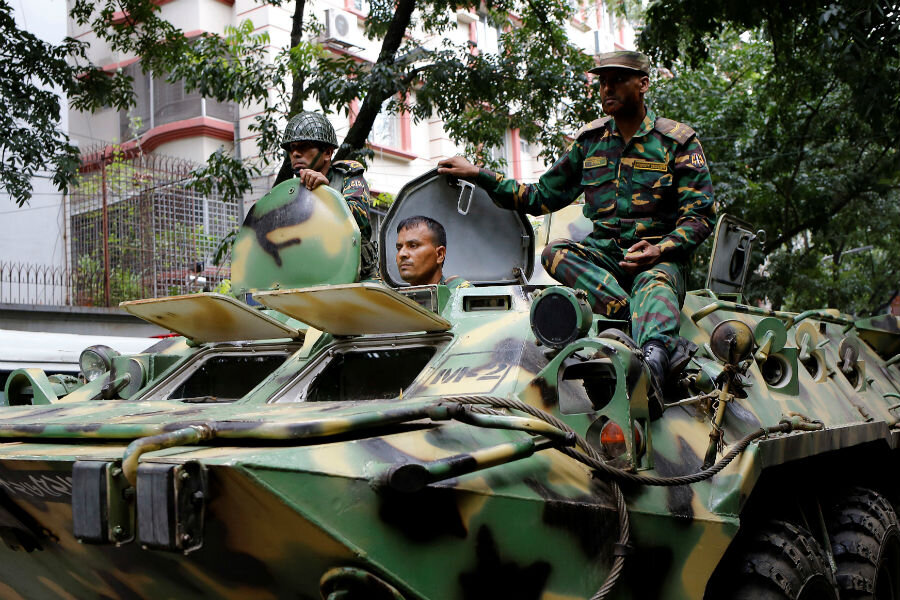Who’s behind the attacks in Dhaka, Bangladesh?
Loading...
At least 20 people were killed on Saturday in the Bangladeshi capital of Dhaka after Islamist militants stormed the Holey Artisan, an upscale bakery and restaurant frequented by foreigners. Some 13 others were rescued by paramilitary forces, who killed six of the attackers and captured a seventh during a 12-hour standoff, according to Bangladeshi authorities.
The Islamic State (IS) claimed responsibility for the attack, although their claim has not yet been independently confirmed.
According to survivor reports, the attackers ordered Bangladeshis to stand before carrying out attacks with machetes and other sharp objects. Among the dead were Italian and Japanese citizens, according to NBC News, while another Japanese person and two Sri Lankans counted among those rescued. No Americans are believed to have been victimized, although three of the dead were students at American universities.
The mass targeting of foreigners in an affluent district known as a diplomatic zone is likely to cast a chill on an expatriate community formed mostly around the world’s second-largest garment industry.
The incident also represents one of the most brutal episodes in a string of attacks by Islamic extremists in Bangladesh against foreigners, LGBT activists, religious minorities, and others perceived as secular or liberal.
IS and its rival Al Qaeda often claim responsibility for the attacks when they occur, but Bangladeshi authorities deny that those groups’ international leaders coordinate with local militants on such operations. Officials place blame on two local groups: Ansar-al-Islam, which pledges allegiance to Al Qaeda, and Jamaat-ul-Mujahideen, which claims affiliation with IS.
Those groups originally grew from volunteers who fought the Soviet Union in its Afghan war, according to a February report from the Terrorism Research Initiative, an umbrella network of experts. In the years following that war’s end in 1992, many of those volunteers came home and established bases in the country’s northwest, from which they carried out attacks domestically.
Western officials have expressed concern over the possibility that recent incidents reflect growing cooperation between local militants and their international affiliates. But as the New York Times noted in May, no such attacks occurred between 2005 and 2014.
Recent incidents may have more secular causes: since taking power in 2014, the ruling Awami League has dedicated itself to a violent crackdown against its political opposition, one that has distracted the state from anti-terrorism security work and “allowed violent radicals of all stripes to let loose,” wrote the Times.
The attack's other victims included two Bangladeshi policemen, a former art gallery owner, family members of local business executives, an Indian citizen, and at least nine Italians, according to authorities in those countries.
This report contains material from Reuters and the Associated Press.





